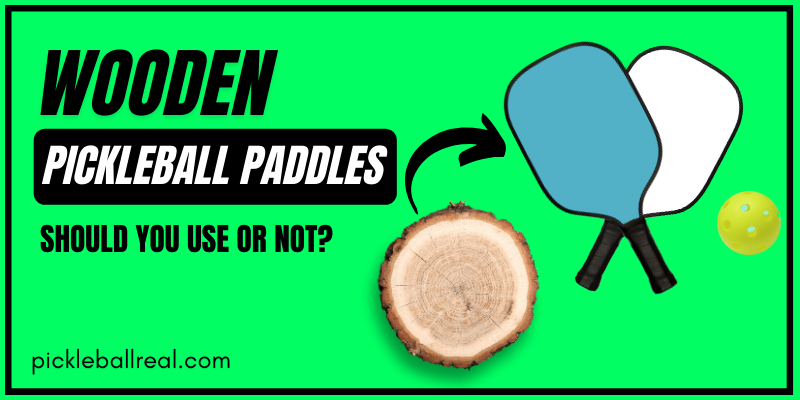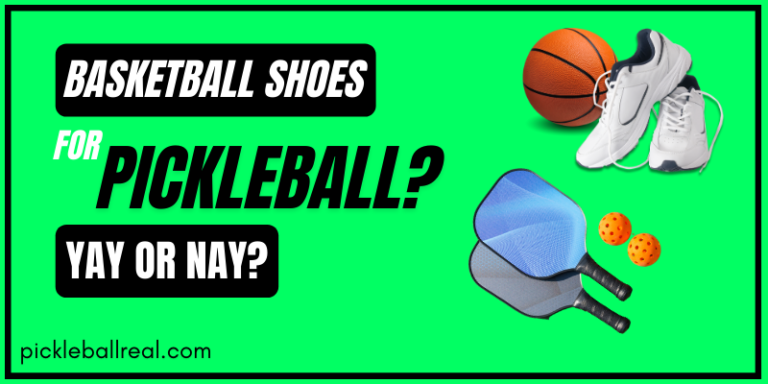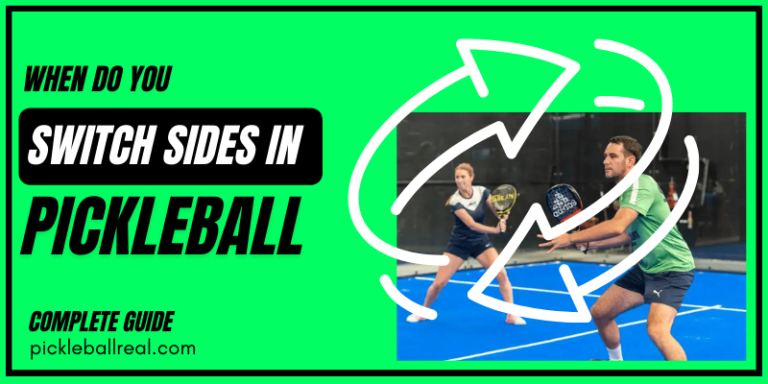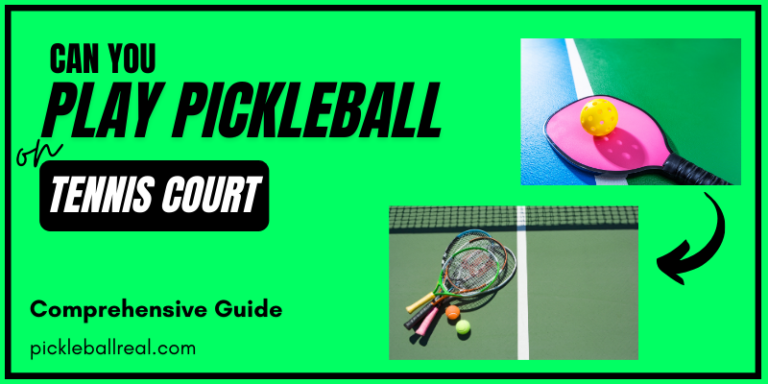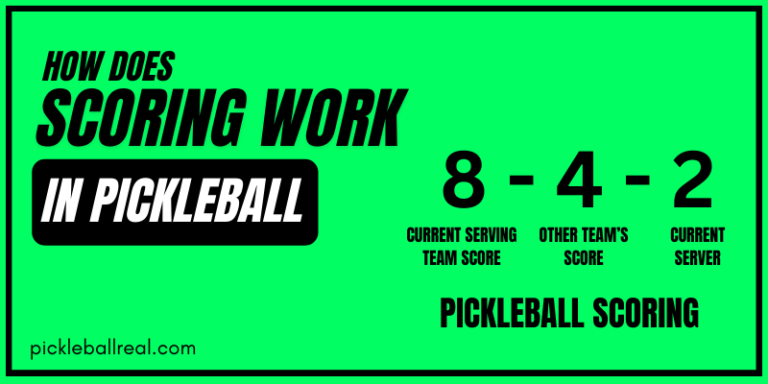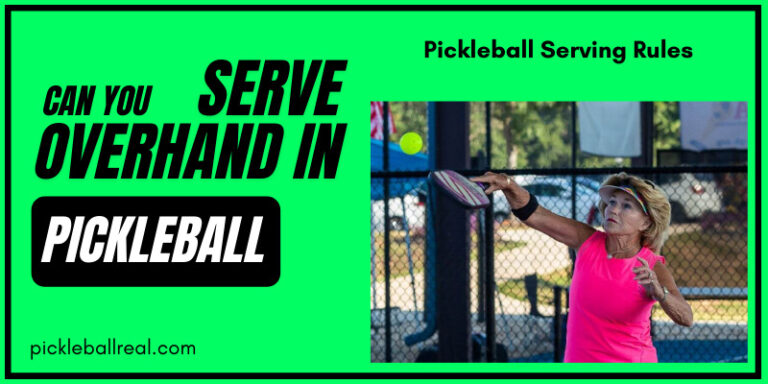Are Wood Pickleball Paddles Good: Comprehensive Guide
The major equipment in pickleball is the pickleball paddle. One common question that often arises in the world of pickleball is whether wood pickleball paddles are a good choice for players.
Yes, wood pickleball paddles have their merits and are considered a good choice by many players. However, their suitability depends on various factors, including playing style, preferences, and skill level.
In this article, we’ll explore the unique qualities of wood paddles, share player experiences, offer maintenance tips, and provide insights to help you make an informed decision about using wood pickleball paddles.
Materials Used for Pickleball Paddles
Pickleball paddles can be made from various materials, each impacting the paddle’s characteristics and performance.
Wood Paddles
Wood paddles are a traditional choice, known for their familiar feel and affordability. They are often considered suitable for beginners. However, they tend to be heavier than other materials, which can affect maneuverability. Wood paddles also offer less power and control compared to composite and graphite options.
Composite Paddles:
Composite paddles are a blend of materials, often featuring a fiberglass face. They strike a balance between power, control, and durability. This makes them suitable for a wide range of playing styles, and they are generally priced in the mid-range.
Graphite Paddles:
Graphite paddles are lightweight and known for excellent power. They provide exceptional control and touch, making them popular among advanced players. However, they often come at a higher price point.
Polymer Paddles:
Made from high-impact polymers, polymer paddles are known for their durability and resistance to dings. They offer a good balance of power and control, making them suitable for recreational players.
Pros and Cons of Wood Pickleball Paddles
Wood pickleball paddles, though traditional, have their own set of advantages and disadvantages. Let’s explore them in detail:
Advantages of Wood Paddles
- Familiar feel: Ideal for players accustomed to traditional equipment.
- Affordability: generally more budget-friendly than other materials.
- Durability: Resistant to cracking or chipping.
Disadvantages of Wood Paddles
- Weight: Tend to be heavier, which may affect maneuverability.
- Limited Power: Less powerful shots compared to graphite or composite paddles.
- Reduced Control: May have challenges with precise shots.
Comparison with Other Types of Pickleball Paddles
To make an informed decision about pickleball paddles, it’s essential to compare wood paddles with other popular materials. Here’s a detailed comparison:
Wood vs. Composite Paddles
Power: Composite paddles offer more power due to their construction.
Control: Wood paddles have limitations in control compared to composites.
Durability: Composite paddles tend to be more durable and resistant to dings.
Wood vs. Graphite Paddles
Weight: Graphite paddles are significantly lighter, enhancing maneuverability.
Touch: Wood paddles provide a better feel for touch shots.
Control: Graphite paddles excel in control and precision.
Wood vs. Polymer Paddles
Weight: Polymer paddles are often lighter than wood paddles.
Durability: Polymer paddles are highly durable and resistant to damage.
Control: Wood paddles may offer slightly better control.
Personal Experiences from Players
The world of pickleball is diverse, with players employing various types of paddles. Among them are those who choose to wield wood pickleball paddles.
Here, we’ll dive into personal experiences shared by players who favor these traditional paddles and provide tips for their maintenance.
We’ll also draw a conclusion on whether using a wood pickleball paddle is a good choice, along with addressing some frequently asked questions.
Personal Experiences with Wood Pickleball Paddles
1. Familiarity and Comfort:
Many players who have been introduced to pickleball through other paddle sports find comfort in the familiarity of wood paddles. These paddles offer a traditional feel reminiscent of ping pong or table tennis, making the transition to pickleball smoother.
2. Control and Touch:
Wood paddles are appreciated for their control and touch on the ball. Players often note that they can execute precise shots and delicate dinks with these paddles, contributing to a nuanced and satisfying gameplay experience.
3. Durability:
Wood paddles are known for their robustness. They can withstand wear and tear, including accidental drops and impacts with the court surface, without succumbing to cracks or breakage. This durability is particularly valued by recreational players.
4. Budget-Friendly:
Wood paddles are typically more budget-friendly than their composite or graphite counterparts. This affordability attracts newcomers to the sport, allowing them to invest in equipment without a significant financial burden.
Tips for Maintaining Wood Pickleball Paddles
Ensuring the longevity of your wood pickleball paddle requires proper care. Here are some essential tips:
1. Cleanliness:
Regularly clean your paddle with a damp cloth to remove dirt, sweat, and debris. Avoid submerging it in water, as prolonged exposure to moisture can damage the wood.
2. Edge Guard:
Consider adding an edge guard to protect the paddle’s edges from chips and dings during gameplay.
3. Storage:
Store your paddle in a cool, dry place, away from direct sunlight or extreme temperatures. Extreme heat or cold can adversely affect the wood.
4. Grip Replacement:
If the grip tape becomes worn or damaged, replace it to maintain a secure and comfortable grip on the paddle.
Conclusion: Is Using a Wood Pickleball Paddle a Good Choice?
The choice of a pickleball paddle ultimately depends on individual preferences, playing style, and skill level. Wood pickleball paddles offer a unique playing experience, characterized by familiarity, control, and durability. They are particularly well-suited for recreational players and those who value traditional touch and precision in their gameplay.
However, for players seeking more power, or specific features, such as lightweight construction or advanced materials, composite or graphite paddles might be a better fit. The decision should align with your objectives and comfort on the court.
FAQs (Frequently Asked Questions)
1. Are wood pickleball paddles suitable for competitive play?
While wood paddles are less common in competitive play due to their limitations in power and control compared to composite or graphite paddles, some players still choose them. It’s a matter of personal preference and playing style.
2. Can I modify my wood pickleball paddle with edge guards or grip tape?
Yes, adding edge guards or replacing grip tape is a common practice to protect wood paddles and enhance grip comfort.
3. How do I maintain the wood surface of my paddle?
Regularly clean the wood surface with a damp cloth, avoid prolonged exposure to moisture, and store it in a cool, dry place to maintain the wood’s integrity.
4. Are wood paddles suitable for beginners?
Yes, wood paddles are often recommended for beginners due to their affordability and ease of use. They provide a solid introduction to the sport.
5. Can I use a wood pickleball paddle in tournaments?
Depending on the tournament’s rules, wood paddles may be allowed. Always check the specific regulations of the event you plan to participate in to ensure compliance with paddle material guidelines.

